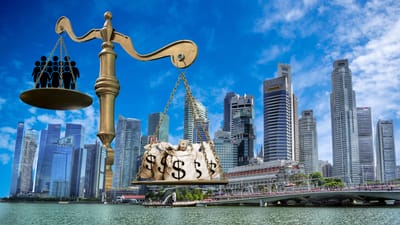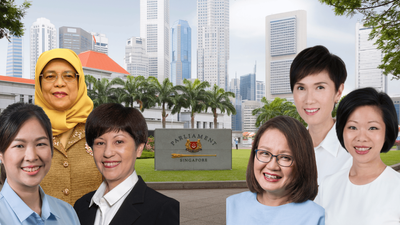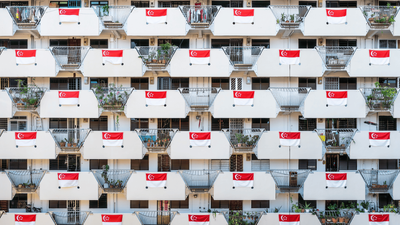Do manifestos matter? The ruling People’s Action Party (PAP) will return to power; the only question is by how much. But the ruling party has long accused the opposition of lacking ideas, or proposing ones that ignore the realities of governing a tiny, resource-scarce nation whose prosperity is forever precarious. Manifestos help test that claim. Are opposition parties really detached from reality? Does the PAP’s institutional expertise, acquired over 60 years in power, make it the sole arbiter of good policy?
These manifestos tell a different story. They tackle issues ranging from cost of living to foreign policy; and suggest solutions—even if not all are convincing. The Workers’ Party (WP) has even included past proposals which it claims the PAP later adopted, such as the Workplace Fairness Act and shared parental leave. Ironically, it’s the ruling party whose manifesto is light on detail, with broad promises to provide “more access to mental health services” and to “explore more public housing options for higher-income couples and singles.” To be fair, PAP’s substantive policies are unveiled in budget speeches and between elections. These, not its manifesto, are better comparisons with opposition plans. We’ve selected a few key issues to focus on: cost-of-living and inequality, housing, immigration, education, foreign policy and governance.
The cost-of-living crisis will define this general election (GE). Since 2022, inflation in Singapore has averaged 4.4 percent (compared to 0.5 percent in the three years before the Covid-19 pandemic), raising prices of essentials and putting lower- and middle-classes under increasing strain. Global supply-chain shocks played a part, but domestic structural sources, not readily acknowledged by the establishment, have too.
The government continued its pandemic-era handouts, doling out billions in Medisave top-ups, cash transfers, and vouchers—CDC, SG60, Climate. It cited these as proof of its commitment to help Singaporeans weather tough times. However, Lawrence Wong, prime minister, conceded these are “not long-term solutions”. The PAP also was mocked for doing what it once derided. During a GE 2015 rally, Chan Chun Sing, then member of Parliament and now minister for education, bristled when some opposition parties suggested giving residents S$300 a month. “Please don't insult my residents. Do you think they are here to be bribed? Is this an election or an auction?”
The GST was increased from seven to nine percent over two years to finance the rising healthcare costs of an ageing population. At the same time, the government claimed its GST vouchers negated the impact on lower- and middle-income households. Critics pointed out that the hikes fueled inflation, allowed businesses to jack up prices disproportionately, and fed the need for the blizzard of vouchers. Wong disagreed.
The three opposition parties want essentials, like basic food items, to be exempt from GST. The PSP proposes reinstating the seven percent GST for everything else; the SDP has even suggested five.
They’ve also called for more structural changes.
“Cash handouts and voucher programs under the PAP government’s tax-and-transfer policies fail to address systemic unemployment and under-employment worsened by a high and rising cost of living,” wrote Lawrence Pek, PSP candidate from the Chua Chu Kang GRC, and Leon Perera, party volunteer, in a Jom essay calling for a Universal Minimum Wage. According to them, the PAP’s fears of a lazy workforce “on the dole” don’t align with experiences of countries that have implemented well-calibrated minimum wage programmes.
Pek and Perera point out that the Progressive Wage Model, which ties wage growth to upskilling, and the Local Qualifying Salary, which pegs foreign worker quotas to the number of locals employed (a citizen or permanent resident earning S$1,600 per month counts as one local), are versions of a minimum wage. They just don’t go far enough. The PSP wants a Minimum Living Wage of S$2,250 per month for all Singaporeans. This, it argues, would especially benefit workers in sectors where a steady supply of cheap foreign labour has kept wages low.
The SDP too supports a minimum wage but hasn’t committed to a figure; it previously suggested S$1,760 per month. More detailed is its RESTART scheme, short for Re-Employment Scheme and Temporary Assistance for the ReTrenched.
Under RESTART, retrenched workers will get 75 percent of their last drawn salary for the first six months; 50 percent for the next six; and 25 percent for a final six-month period. Payouts will be capped at the prevailing median monthly income. The SDP estimates the scheme will cost S$2bn annually. The state will cover 80 percent, and the rest will come from a pooled fund employers and employees would contribute equally to.
The WP proposes a S$1,600 minimum wage, and a more modest Redundancy Insurance Scheme. Retrenched workers will get 40 percent of their last drawn salary, capped at the prevailing median income, for up to six months. The scheme will be funded through the Employment Security Fund, built from equal monthly premiums by employers and employees. Each would pay 0.05 percent of the employee’s salary, meaning someone earning S$5,000 would pay S$2.50 monthly, matched by their employer.
Opposition parties also want to strengthen support for other vulnerable groups, including the elderly, caregivers, and single parents. Ideas include food discounts for the elderly, better housing access for single parents and free off-peak public transport for seniors and those with disabilities.
Healthcare plans range from the PSP’s idea of publicly-funded MediShield and CareShield premiums to the SDP’s simplified, single-payer healthcare system.
One suggestion to finance their numerous plans is by reforming how land revenues are treated. For instance, under current rules, when the government sells industrial land, the entire sum goes into past reserves which cannot be touched. The PSP proposes a change: if land is sold on a 20-year lease at S$20m, revenue should be booked over the lease’s duration: $1m annually in this example.
Another is a further dipping into the reserves. The WP proposes tweaking the government’s current 50/50 rule—spend half of the returns today, save half for tomorrow—to 60/40, while still leaving the principal untouched.
They each also want to tax the rich more. Some of the many ideas include PSP calls for (unspecified) estate duties, the SDP wanting to raise personal income tax to from 24 to 28 percent for those earning over S$1m, and the WP’s push for a 0.5 to two percent wealth tax on the top one percent. All this would also presumably help moderate inequality.
But a thorough evaluation of these proposals is not possible without knowing the actual size of the reserves. Still, the party manifestos would have been more robust if they included an estimate of total expenditure across their proposed schemes. The PSP comes closest, citing an annual S$2-3bn outlay for MediShield and CareShield premiums; and S$2.5bn for caregiver allowance.
To understand why public housing has become such a political hot potato, recall what Lee Kuan Yew said in 2011, ahead of a crucial GE: “85 percent of Singaporeans are living in HDB flats and we intend to keep the values of these homes up. It will never go down!”
But in 2017, two years after Lee passed, the PAP essentially flip-flopped on the point. Lawrence Wong, then minister for national development, confirmed that only a small share of flats would likely be eligible for the government’s Selective En bloc Redevelopment Scheme (SERS), whereby the government acquires and redevelops older HDB blocks, offering residents compensation and rehousing opportunities. The government has thus far offered scant details of its other Voluntary Early Redevelopment Scheme (VERS), though it’s clear that terms won’t be as generous as SERS. This effectively means that the vast majority of flats would be worth nothing when their 99-year leases ran out. Because of “lease decay”, the HDB flats will eventually start to decline in value from their peaks. There is the very real possibility that Singaporeans’ retirement funds might suffer through their investments in public housing.
So contentious is the issue that the PAP and WP crossed swords in Parliament in 2023 over it, after the ruling party mischaracterised the WP’s 2019 housing proposals, as Jom showed. This quagmire that Singapore finds itself in affects everything from fertility rates and multi-generational living to property markets and retirement nest eggs. Its complexities were captured by Jonathan Lin in “Affordability in the lion city: is Singapore’s public housing model built to last?”
The PAP’s latest policy tweaks include: housing estates will be reclassified from mature/non-mature to Standard, Plus, and Prime (depending on desirability of location); stricter rules for Plus and Prime properties, including a 10-year minimum occupation period and income ceilings for resale buyers, which could ease the “lottery effect”, and temper resale prices from 2035 onwards—though demand could spill over into other segments. Moreover, it doesn’t really have an impact on the lease decay issue.
Many fundamental problems remain, and there is no magic answer. The opposition parties’ GE2025 alternatives involve trade-offs. Perhaps the most ambitious is the PSP’s Affordable Homes Scheme (AHS), which seeks to “sever the link between housing prices and retirement”.
The AHS carves out a separate property sub-category for new build-to-order (BTO) flats, one where the HDB and subsequently the buyer no longer have to pay the government’s land costs, which are assessed at present market rates. This accounts for some 60 percent of the total building cost, according to the PSP. Owners can pass on the flats to their descendants, but if they ever choose to sell it in the resale market, they’ll at that point have to pay HDB for the land.
This scheme purportedly will both ensure affordability for new buyers without notably affecting the dynamics of the current retail market, because AHS flats, even after five years, will make up under 10 percent of total HDB supply.
Who loses? The government’s reserves, primarily. Because the HDB and thus, buyers are no longer paying that 60 percent into the government’s land reserves for every plot, financial assets will accumulate at a slower rate and so will the return on the reserves. But, on the flipside, the government will save money from not having to provide as many grants to buyers. The PSP believes that the government’s budgetary impact will be “neutral”.
The SDP’s Non-Open Market (NOM) Scheme is similar, in that it creates a new class of flats that are priced without accounting for land costs. However, it allows for current owners of Open Market flats to convert to NOM, for a return in monies paid; but doesn’t allow the opposite option—to sell a NOM flat in the open market—which is something the PSP’s does.
The WP, meanwhile, has repeated its 2019 suggestion of a universal buy-back scheme (UBS), as opposed to the PAP’s SERS and VERS, which are far more limited. “This effectively creates a backstop in the public housing system and ensures a level of stability concerning decaying leases and depreciating value,” Lin wrote. The trade-off is that it’ll be more expensive for the government to finance such an initiative for all HDB estates, instead of just some.
As always, a proper assessment of the long-term viability of the AHS, the NOM and the UBS requires knowledge of our reserves—something known only to the PAP and the president. The PSP’s scheme would erode the reserves, Indranee Rajah, minister in the prime minister's office and second minister for finance, said in April. But by how much? Isn’t that a question that we should be deliberating publicly, amidst a housing crisis in a democracy?
The three parties have numerous other housing proposals, from lowering the age of eligibility for single buyers and prioritising young families to greater transparency into how the government determines land values.
Between 2004 and 2023, Singapore’s population rose from about 4m to 6m, even as the citizen share fell from over 73 percent to roughly 61 percent. This decline occurred despite tighter immigration rules for prospective citizens since 2009-10. In 2014, the PAP government also introduced the Fair Consideration Framework (FCF), guidelines for how employers should consider locals before hiring foreigners on Employment Passes (EPs). In the past five years, qualifying EP salaries have been increased from S$3,600 to S$5,600, with higher thresholds for specific sectors, and older workers.
The PSP proposes further tightening through a S$1,200 monthly EP levy to offset the fact that employers don’t have to pay CPF for EP holders. The party wants the minimum qualifying salary for all EPs to be raised to S$10,000 per month—nearly double the current threshold. It also moots a per-company nationality quota to curb reliance on workers from one country—a nod, perhaps, to the 2005 Comprehensive Economic Cooperation Agreement (CECA) with India. The party has flagged CECA in Parliament before. PSP also calls for cuts to foreign student scholarships and tuition grants.
The SDP wants a “Singaporeans First” policy. Only foreign professionals with locally unavailable skills would be allowed under its Talent Track Scheme. Employers would bear the burden of proof.
The WP advocates a new fixed-term work pass for sectors where there is “less of a shortage” of skilled local workers. To renew it, employers must show that new skills were transferred to local workers, or the industry at large.
The motive behind these suggestions is understandable. Protect the local workforce by reducing reliance on migrants. But Jessica Pan and Walter Theseira, economists at the National University of Singapore, and the Singapore University of Social Sciences respectively, feel there is no easy solution. “[I]t is possible that at least some portion of the resident labour force will be at a persistent disadvantage when facing technological change, compared with a migrant labour force that can be readily upgraded simply through replacement,” they wrote in 2023.
Calls for primary education reform have grown louder, driven by concerns that the PSLE is too stressful for 12-year-olds, and of limited utility in today’s world. High student-teacher ratios push wealthier parents toward tuition for their kids, widening the gulf with those who can’t afford it. Since GE 2020, the Ministry of Education (MOE) has scrapped mid-year exams in primary and secondary schools, and introduced full subject-based banding which, it claims, reduces the stakes of the PSLE. It has also sought to shift the blame onto parents for taking a “narrow view of exams.” In addition, MOE insists that reducing class sizes would dilute teacher quality and bizarrely, divert manpower from other sectors.
The WP and PSP propose making the PSLE optional, giving students the choice to enrol in a 10-year through programme from Primary One to Secondary Four. The SDP wants the PSLE abolished altogether. A bold idea but unlikely to gain traction in a system that prefers smaller policy tweaks.
All parties support lower student-teacher ratios. The PSP has criticised the MOE for cutting teacher recruitment, and proposes reemploying older teachers under a “Flexi-Adjunct” scheme. This would reduce the ratio without compromising quality. It also calls for regular mental health assessments and at least two qualified counsellors per school, up from one. With anxiety levels and depression spiking, students need all the help they can get.
WP is the only party to address foreign policy in its manifesto (as it’s done before). In November 2023, the party condemned Hamas’s October 7th attack on Israel but cautioned against seeing it without historical context. In Parliament, Vivian Balakrishnan, minister for foreign affairs, and Lawrence Wong, then deputy prime minister, accused Singh of politicising a national security issue. They insisted the WP explicitly call the attack “terrorism”—which it eventually did.
Now, WP has called for Singapore to recognise Palestine as a state even before a two-state solution is achieved. Critics may see this as opportunism; supporters, as principled consistency, and a nod to Singaporeans’ growing desire to have a say in foreign affairs—long dominated by the political and bureaucratic elite.
The WP also wants better enforcement of weapons-export bans to Myanmar’s junta, and for Singapore to play a greater role in helping the war-torn country. Jom has previously reported on Singapore’s connections to the conflict, including the use of our port for arms transhipment, and the presence of junta-linked elites on our shores. WP wants Singapore to be closer to ASEAN, and to do more to foster peace and prosperity in the region. Its proposal to create a Singapore Agency for International Development is in that spirit but that’s unlikely to find purchase at a time when economic fears—real and conjured—are gripping voters.
The PAP dominates every aspect of life in Singapore. The opposition parties have all pledged to reshape the system if they ever come to power—freer information, fairer politics. A Freedom of Information Act; funding for indie media; abolishing GRCs; and depoliticising the People’s Association; an independent Election Boundaries Review Committee; and transparency on how Temasek and GIC manage the nation’s money. Great. Let’s hold them accountable to these joyous promises.
Abhishek Mehrotra is Jom’s head of content.
Sudhir Vadaketh is Jom’s editor-in-chief.
As with our broader coverage, in this piece Jom focused on four parties. It’s not ideal. Every party, however small, deserves a platform. However, we simply do not have the resources to do so right now. With your support, we could, by the next GE. Get a paid subscription now.
Letters in response to this piece can be sent to sudhir@jom.media. All will be considered for publication on our “Letters to the editor” page.







